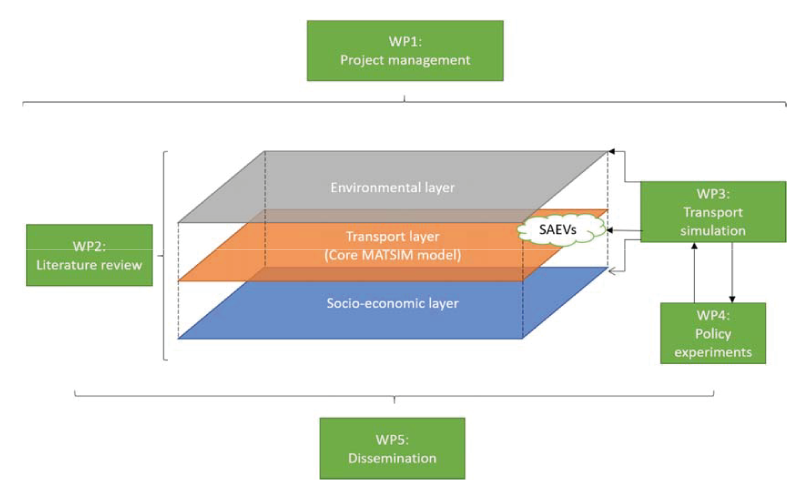Project
Background & Motivation
The transport sector has accounted for 28% of the CO2 emissions in Austria in 2015 1 , 54% of which are due to passenger cars. Unlike most other sectors, emissions from the transport sector are still increasing.
In order to fulfil the ambitious goals set by the Paris Agreement and to act in line with the sustainable development goals (SDGs), these emissions will have to be reduced substantially.
Objectives
The simulations will yield specific advice for policy-makers at all governance levels concerning the environmental and socioeconomic effects of SAEVs under different scenarios.
Due to the large number of simulation runs with different underlying assumptions, we aim to involve stakeholders in defining the final scenarios for analysis which will enable us to provide policy-makers with in-depth information on the risks and uncertainties attached to the introduction of SAEVs as well as to the corresponding policy options, especially concerning socioeconomic effects.
Such information is especially valuable when uncertainty is large and path-dependency potentially very high (e.g. in the case of large-scale infrastructure investments or changes in taxation schemes).
Research questions and methodology
In order to meet its objectives and answer the associated key research questions, SimSAEV disposes of a target-oriented structure comprised of five work packages. All work packages are strongly interlinked and arranged in an order that ensures a smooth and logical workflow.
Each work package encompasses a tailored set of methods required to achieve the anticipated respective work package results.

Work packages
- WP1 - Project management: Contains all aspects of project management.
- WP2 - Literature review: Aims at establishing a synthesis of existing studies on environmental and socio-economic effects of SAEVs, with a focus on synergies and trade-offs between the two types of effects.
- WP3 - Transport simulation: Develops a module for SAEVs on top of an existing agent-based MATSim model for Vienna. It will allow for the simulation of different scenarios with respect to the available SAEV technology, the SAEV market and ownership structure, and the underlying preferences of the population with respect to SAEVs and car-/ride-sharing in general. WP3 also covers the simulation of the policy scenarios that are developed in WP4.
- WP4 - Policy scenarios: Defines policy scenarios with respect to regulation, infrastructure investments and taxation/pricing. These will be fed into the transport simulation model developed in WP3, and then evaluated according to their transport-related, environmental, and socioeconomic effects at a disaggregated spatial scale.
- WP5 - Dissemination: Communicates the concept and results of SimSAEV. A dissemination & out- reach concept is devised and implemented via a range of communication channels and formats including a website, social media accounts, policy briefs, press releases, academic journal articles, and stakeholder workshops.